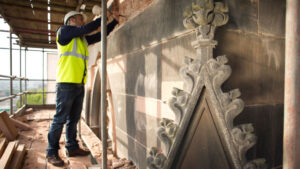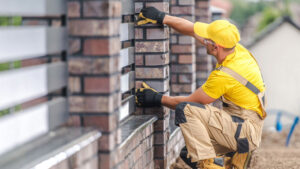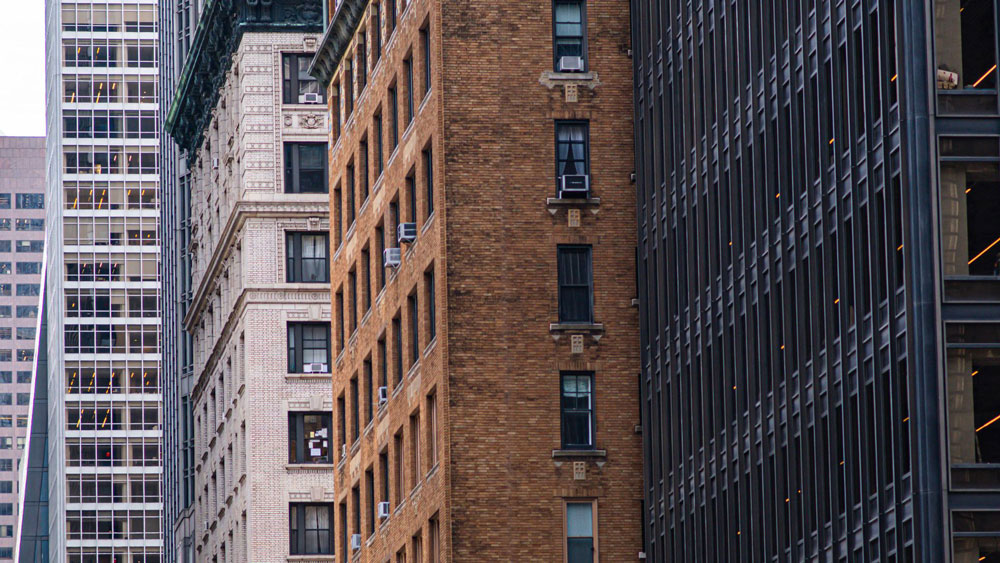Have you ever wondered how the skyscrapers in New York City have been able to stand so tall for so many decades? Like any other structure, these buildings require regular maintenance to ensure their pristine condition and the safety of those around them. This is especially true for skyscrapers, where it’s exposed to various environmental stresses like strong winds, rain, and storms.
Additionally, that’s why regulations such as Local Law 11 exist, which mandates regular building inspections to prevent damages that can pose a danger to people that surround them.
In this article, we will explain the critical role of Local Law 11, how it ensures the safety of buildings in big cities and the importance of masonry restoration in this process.
What is Local Law 11?
Local Law 11, currently known as the Facade Inspection and Safety Program (FISP), is a safety regulation that applies to all New York City buildings taller than six stories. It mandates that all exterior walls, windows, and attached fixtures, including signs, flagpoles, and balcony enclosures, be inspected to prevent accidents like the tragic incident that led to its implementation in 1980.
Building owners are required by Local Law 11 to have their property inspected by a Qualified Exterior Wall Inspector (QEWI). Once the inspection is completed, a technical report must be filed with the NYC Department of Buildings (DOB).
Failure to comply with these regulations can lead to severe fines and put the safety of pedestrians and residents at risk.
For more information on this vital safety regulation, please visit NYC Local Law 11 (FISP) site.
 What is Masonry Restoration?
What is Masonry Restoration?
Masonry restoration is a crucial process involving preserving and transforming structures made from bricks, mortar, stone, and cement. The primary aim of masonry restoration is to maintain the original appearance of the building while ensuring its durability and longevity.
Masonry restoration involves a comprehensive assessment of the building’s condition, followed by a thorough restoration plan that addresses any underlying issues. The process typically includes cleaning, repointing, and replacing the masonry elements to their original state, using appropriate techniques for the specific materials.
- Cleaning: Removing dirt and other contaminants using different methods, like chemical cleaning and pressure washing.
- Parging: Applying a layer of cement mortar to the surface of the wall, gives an extra layer of protection.
- Repointing: Removing bad mortar joints and replacing them with new mortar. The process involves using tools such as a chisel to remove old mortars and fill the joint with new ones.
- Replacing: Replacing broken or deteriorated bricks, stones, and blocks with new or old units that are still in good condition.
- Tuckpointing: Restoring the mortar joints with more focus on design improvement, using a more decorative technique. Tuckpointing is typically done to enhance the look, but more importantly to make the masonry facade watertight.
- Waterproofing: Applying sealant to the surface of the materials to prevent water seeping in and other damages. The process of masonry restoration requires intricate work, so hiring an experienced and professional masonry contractor is essential to ensure excellent and long-lasting results.
Why is Masonry Restoration Important to Local Law 11
New York City is home to many buildings constructed with masonry materials like bricks and stones. Although these materials are durable, over time, they can deteriorate, creating potential hazards like falling bricks or other masonry elements.
To prevent accidents and save lives, masonry restoration projects are essential. Restoration techniques can ensure that the building’s critical components, including the masonry, are well-maintained and in good condition, thus maintaining the building’s safety and structural integrity.
Other Benefits of Masonry Restoration
Masonry restoration offers many benefits to building owners and the community. These benefits include:

- Improved appearance: Masonry restoration helps buildings and structures last longer and improves appearance. Using various techniques, masonry restoration can significantly enhance looks, making them more appealing.
- Increased property value: Masonry restoration can increase property value by improving the appearance and durability of buildings and structures.
- Preservation of historic structures: Many historical buildings are constructed with masonry materials. Restoration helps preserve important historical landmarks for the community to enjoy.
- Improve energy efficiency: Restoration can help transform buildings to make them more energy efficient. As a result, building owners can save money on utility bills by reducing energy consumption and costs while minimizing their carbon footprint.
Why Choosing a Professional Like Graciano is Important
Ensuring the safety of a building is a critical process and requires hiring a professional restoration company to carry out the intricate job of restoring a building. Using high-quality materials alone will not guarantee the longevity and structural integrity of a building that conforms to safety regulations such as Local Law 11.
Choosing the wrong contractor could lead to poor results and increased costs, requiring further restoration in a short time frame.
At Graciano, we have earned the highest reputation in the masonry field thanks to our unsurpassed experience and expertise. Our team offers the best prices and guarantees exceptional results with no delays.
Closing Note
If you’re a building owner and regulations such as Local Law 11 apply to your building, comply with the existing law by having a professional inspect your property regularly. Besides maintaining the condition, appearance, and overall value of your building, undergoing restoration that conforms to local safety regulations can help save lives.
Contact Graciano today to learn how we can help you restore and maintain your structures.
